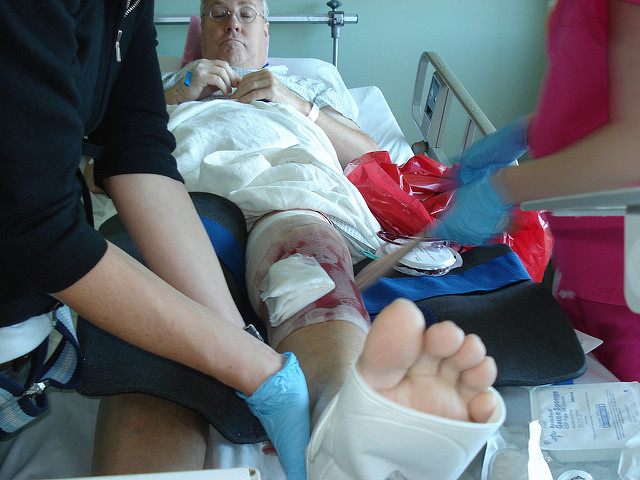A new treadmill developed by Motek Medical uses virtual reality (VR) to safely challenge patients with neurological impairments. Called CAREN (Computer Assisted Rehabilitation Environment), the platform has been tested by the Cleveland Clinic to help evaluate and train individuals with Parkinson's disease, multiple sclerosis, and other neurological conditions. The Cleveland Clinic is the first nonmilitary site in North and South America to install the interactive virtual reality treadmill.
Specifically, CAREN analyzes balance, locomotion, and coordination in affected patients by placing them in an immersive and interactive environment. While a patient walks on the treadmill, surrounding visual projection, the floor, and the sound system react to the patient's behavior in response to real-time motion-capture capabilities.
Another characteristic of CAREN is labeled '6-Degrees-of-Freedom,' and refers to the treadmill's ability to move up, down, left, and right and gives the platform simulator-like qualities. Real-time feedback merges data from CAREN's hardware to constantly perform quantifiable evaluation.
Physical Applications Of Virtual Reality Rehabilitation
- Identifying balance compensation anomalies.
- Measuring and correcting gait problems from inefficient muscle use.
- Identifying neural substrates of task difficulty and cognitive effort.
In less scientific terms, this means that the virtual reality treadmill has the capability to help zero in on physical and mental effects of neourological diseases, which will hopefully lead to improvements for people with brain conditions. By catering to a patient's customized needs and preferences, CAREN offers researchers future opportunities to make medical advancements for people suffering from degenerative brain diseases or traumatic brain injuries.
Since brain injuries may occur anytime and anyplace, from playing professional football, getting into a car crash or motorcycle collision, or even due to the circumstances of being homeless, technological developments are all the more necessary to help improve the lives of people suffering from neurological impairments. A virtual reality treadmill is just the latest in modern advancements for the brain, and hopefully there are many more creative treatments to come.
CAREN could be the future for people suffering from neurological conditions or traumatic brain injuries. If you or someone you know has experienced a brain injury from a motor vehicle accident, contact The Michigan Law Firm, PLLC at 844.4MI.FIRM for a free consultation.





